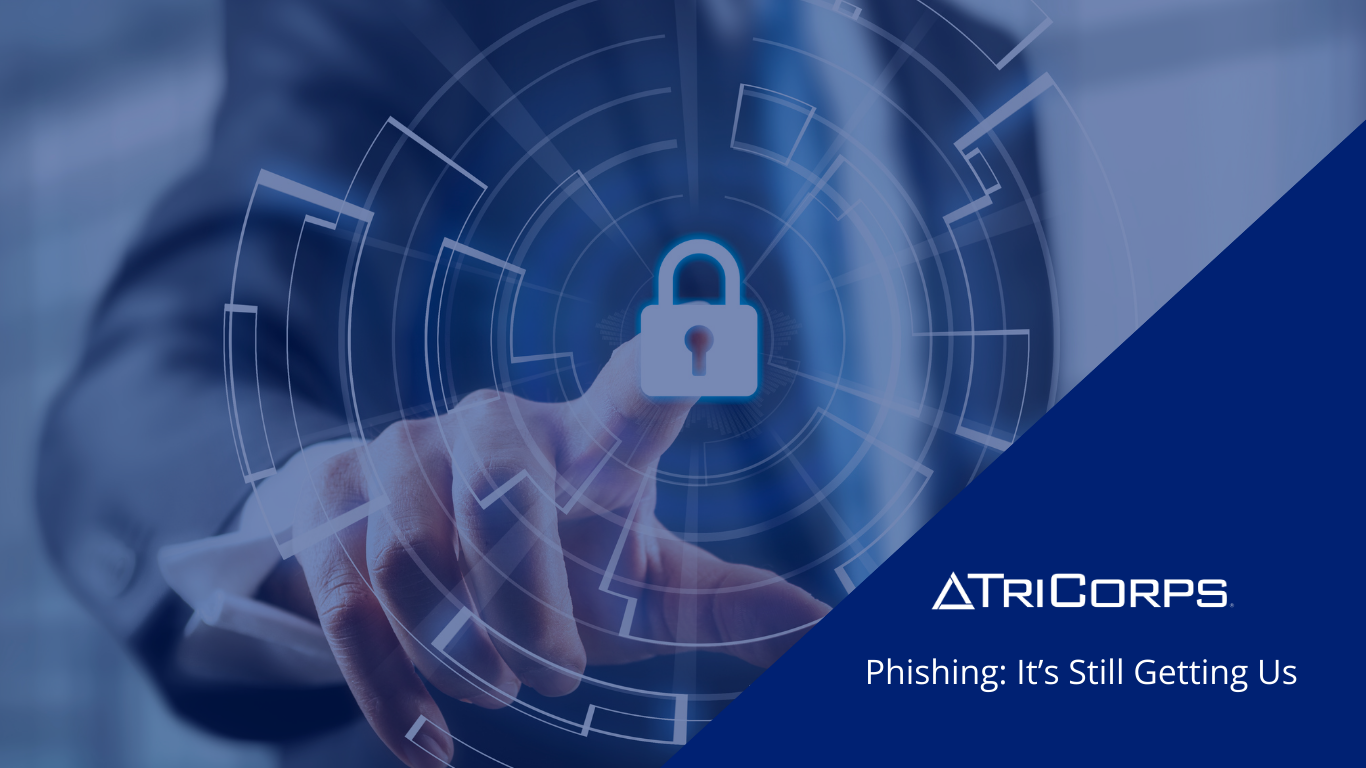At TriCorps, we’ve invested heavily in security. We have firewalls, intrusion systems, access control, and endpoint protection. But all of that can be bypassed if one employee clicks on the wrong email. And unfortunately, that’s still happening.
We regularly send phishing tests to TriCorps employees to help everyone stay sharp. These test emails are realistic by design. They’re meant to catch you off guard, just like the real thing would. The goal is to build awareness and reinforce safe habits. But even with these regular tests, we continue to see people clicking links and opening attachments that could expose the company to real damage.
Why This Matters
Attackers are no longer focused only on Fortune 500 companies. They target businesses like ours because they assume we don’t have the same layers of defense, and they’re often right. It only takes one successful phishing email to cause serious problems. A bad click can lead to stolen passwords and account access, ransomware locking down our network, exposure of customer and employee data, costly downtime, and a damaged reputation. This isn’t just a theory—we’ve all seen these exact scenarios play out at other companies.
What to Watch For
Even the most convincing phishing emails usually have a few things that don’t add up. The sender’s email address may not match who it claims to be from. Links might point to odd or unfamiliar domains. Attachments—especially zip files or Word documents that ask you to enable content—are a red flag. Many messages create a sense of urgency with warnings such as “your account will be closed,” “you missed a package,” or “click now to avoid suspension.” Others use vague greetings like “Dear Customer” instead of addressing you by name.
What To Do
The best way to defend against phishing is to slow down. Most attacks rely on catching you when you’re in a hurry. Don’t click anything unless you’re certain it’s safe. Use the “Phish Alert” button in Outlook to report suspicious emails—it only takes a second. And if something feels off, ask someone. Forward the email to IT or call to verify before taking action.
You’re the First Line of Defense
Cybersecurity is not just an IT issue; it’s a company-wide responsibility. Each of us has access to systems and data that, if compromised, could cause serious damage. We’ve built our business on being a trusted provider of physical and electronic security. That same mindset needs to apply to how we handle email, links, and attachments.
Take a moment before you click. One careless second can cause weeks of cleanup.

